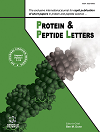Protein and Peptide Letters - Volume 26, Issue 2, 2019
Volume 26, Issue 2, 2019
-
-
Self-assembly of Functional Nanostructures by Short Helical Peptide Building Blocks
More LessAuthors: Santu Bera and Ehud GazitThe self-assembly of short peptide building blocks into well-ordered nanostructures is a key direction in bionanotechnology. The formation of β -sheet organizations by short peptides is well explored, leading to the development of a wide range of functional assemblies. Likewise, many natural proteinaceous materials, such as silk and amyloid fibrils, are based on β-sheet structures. In contrast, collagen, the most abundant protein in mammals, is based on helical arrangement. Similar to β-sheet structures, short helical peptides have been recently discovered to possess a diverse set of functionalities with the potential to fabricate artificial self-assembling materials. Here, we outline the functional roles of self-assembled nanostructures formed by short helical peptides and their potential as artificial materials. We focus on the association between self-assembled mesoscale structures and their material function and demonstrate the way by which this class of building blocks bears the potential for diverse applications, such as the future fabrication of smart devices.
-
-
-
Dimerization of Antimicrobial Peptides: A Promising Strategy to Enhance Antimicrobial Peptide Activity
More LessAntimicrobial resistance is a global health problem with strong social and economic impacts. The development of new antimicrobial agents is considered an urgent challenge. In this regard, Antimicrobial Peptides (AMPs) appear to be novel candidates to overcome this problem. The mechanism of action of AMPs involves intracellular targets and membrane disruption. Although the exact mechanism of action of AMPs remains controversial, most AMPs act through membrane disruption of the target cell. Several strategies have been used to improve AMP activity, such as peptide dimerization. In this review, we focus on AMP dimerization, showing many examples of dimerized peptides and their effects on biological activity. Although more studies are necessary to elucidate the relationship between peptide properties and the dimerization effect on antimicrobial activity, dimerization constitutes a promising strategy to improve the effectiveness of AMPs.
-
Volumes & issues
-
Volume 32 (2025)
-
Volume 31 (2024)
-
Volume 30 (2023)
-
Volume 29 (2022)
-
Volume 28 (2021)
-
Volume 27 (2020)
-
Volume 26 (2019)
-
Volume 25 (2018)
-
Volume 24 (2017)
-
Volume 23 (2016)
-
Volume 22 (2015)
-
Volume 21 (2014)
-
Volume 20 (2013)
-
Volume 19 (2012)
-
Volume 18 (2011)
-
Volume 17 (2010)
-
Volume 16 (2009)
-
Volume 15 (2008)
-
Volume 14 (2007)
-
Volume 13 (2006)
-
Volume 12 (2005)
-
Volume 11 (2004)
-
Volume 10 (2003)
-
Volume 9 (2002)
-
Volume 8 (2001)
Most Read This Month


